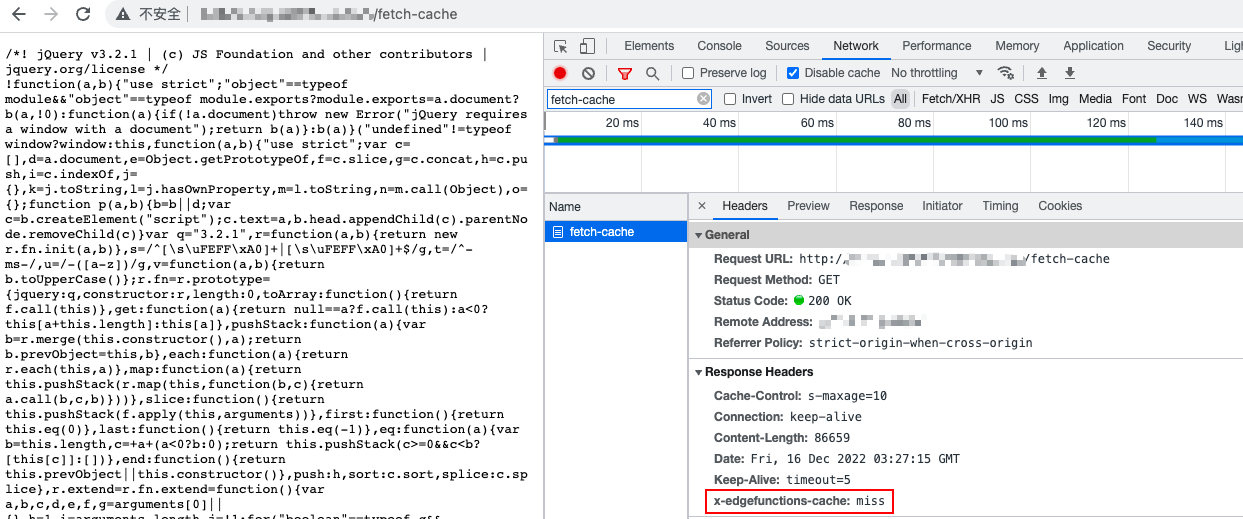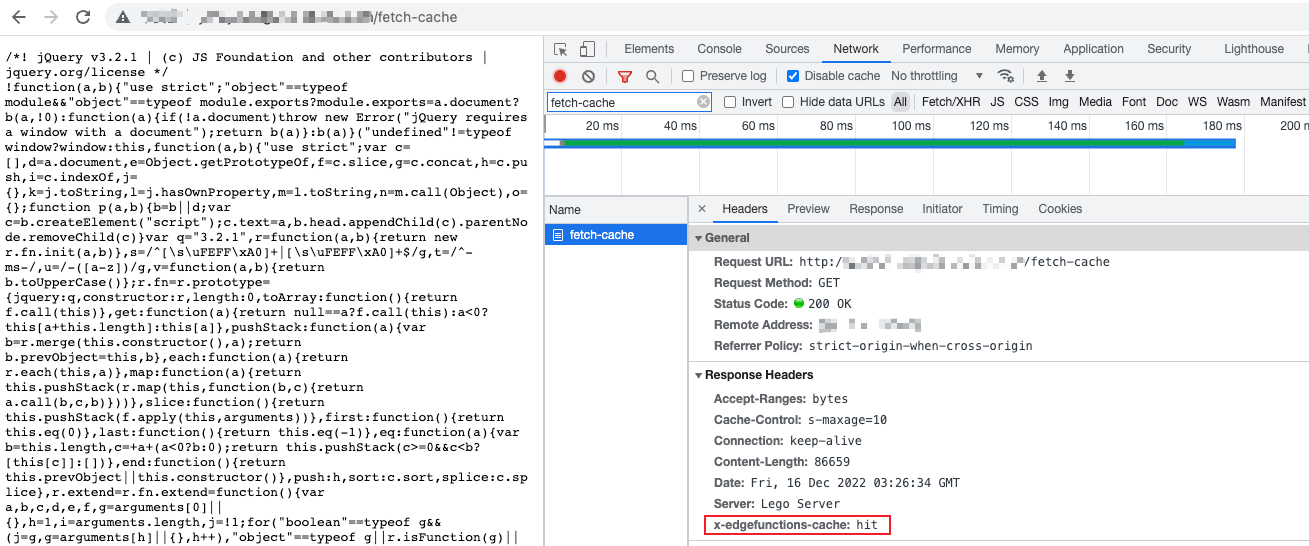Using the Cache API
In this sample edge function, the Fetch API is called to fetch a remote jQuery.js resource, and the Cache API is called to cache the resource to an EdgeOne edge node. The cache duration is set to 10s.
Sample Code
async function fetchJquery(event, request) {const cache = caches.default;// If the resource is not found in the cache, fetch the resource from the origin server and cache the resource.let response = await fetch(request);// Add the Cache-Control field to the response header and set the cache duration to 10s.response.headers.append('Cache-Control', 's-maxage=10');event.waitUntil(cache.put(request, response.clone()));// Add an identifier indicating that the resource is not found in the cache to the response header.response.headers.append('x-edgefunctions-cache', 'miss');return response;}async function handleEvent(event) {// The resource URL, which is also used as the cache key.const request = new Request('https://static.cloudcachetci.com/qcloud/main/scripts/release/common/vendors/jquery-3.2.1.min.js');// Obtain the default cache instance.const cache = caches.default;try {// Fetch the associated resource from the cache. If the resource is already cached, the API does not fetch the resource from the origin server, and a 504 error code is returned.let response = await cache.match(request);// If the resource is not found in the cache, re-fetch the remote resource.if (!response) {return fetchJquery(event, request);}// Add an identifier indicating that the resource is found in the cache to the response header.response.headers.append('x-edgefunctions-cache', 'hit');return response;} catch (e) {await cache.delete(request);// If the cache duration of the resource times out or another error occurs, re-fetch the remote resource.return fetchJquery(event, request);}}addEventListener('fetch', (event) => {event.respondWith(handleEvent(event));});
Sample Preview
In the address bar of the browser, enter a URL that matches a trigger rule of the edge function to preview the effect of the sample code.
The resource is not found in the cache.

The resource is found in the cache.
